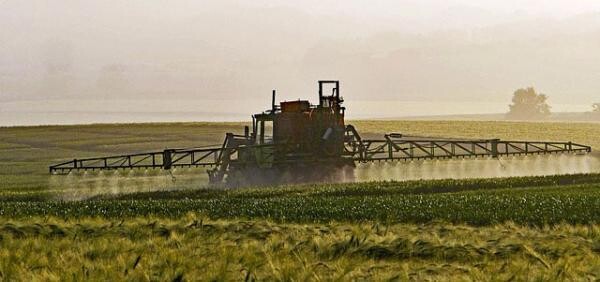The Link between Health and Sustainability, by Way of Glyphosate and Our Microbiomes
Many of you know that my journey into sustainability started with an environmental illness. Some of you know that, after 15 years of apparently being cured, I am now beset with an autoimmune disease.

Many of you know that my journey into sustainability started with an environmental illness. Some of you know that, after 15 years of apparently being cured, I am now beset with an autoimmune disease. So, I’ve gone back to the drawing board on my health and have been happy to find that the relevant science is now much more advanced and that there are studies documenting why the alternative modalities I worked through actually helped me heal. And also why I likely got sick again.
The biggest bit of new information, which many inside and outside of conventional medicine aren’t yet aware of, is the incredible role played by all the critters that live inside and outside of us. We are covered in microbes! And, in fact, if we weren’t, we couldn’t function. They perform a multitude of tasks, from helping us digest our food, to detecting pathogens, to keeping our skin and digestive system healthy. And on the flip side, having the wrong microbes, or an imbalance, or even just a lack of diversity in our gut, is strongly linked to autoimmune diseases as well as diabetes, Alzheimer’s and more.
What does this all have to do with sustainability? Well, I’m discovering something quite interesting. As engineers and scientists, we can grasp that there is nothing wrong with genetically modified organisms per se, right? After all, genes mutate constantly and a genetic modification may be something that fits right in with the rest of the natural world or causes harm. Whether it’s good or bad has nothing to do with the fact that it’s genetically modified. But when we use genetic modification to encourage the spread of toxic herbicides all over the planet, that is a different story.
Most genetically modified (GMO) crops are engineered for compatibility with weed and bug-killing chemicals. Important crops like soybeans and corn have been modified to resist the potent herbicide glyphosate, so farmers can plant them and then spread tons of glyphosate to kill any weeds. Voila! Low-maintenance, high-yield farming.
You’ve probably heard how the use of glyphosate and the resulting monocropping (with glyphosate-tolerant GMO crops) are bad for bees. It’s also bad for many other beneficial insects and animals. Studies have also found that glyphosate reduces soil biodiversity.
So, is it any wonder that the latest research says that when we ingest glyphosate, it reduces diversity in our gut? (See here and here.) Studies show that, even at intake levels approved as safe for humans by the EPA, significant changes occur in our microbiome. Glyphosate is just as destructive in our microenvironment as it is in the macroenvironment.
You might say, as I do, “I don’t eat GMO foods, so I shouldn’t have to worry.” Except that we do have to worry. Even on non-GMO foods, glyphosate may be applied to fields between crops, or used as a desiccant for crop dry down.
Glyphosate has been found in non-GMO Cheerios as well as many common GMO and non-GMO foods.
Once again, my health has led me right back to the purpose of EarthShift Global — to find ways to help us do better with the planet. Let’s educate ourselves about glyphosate and how we might be able to do better without it.
Written by Lise Laurin